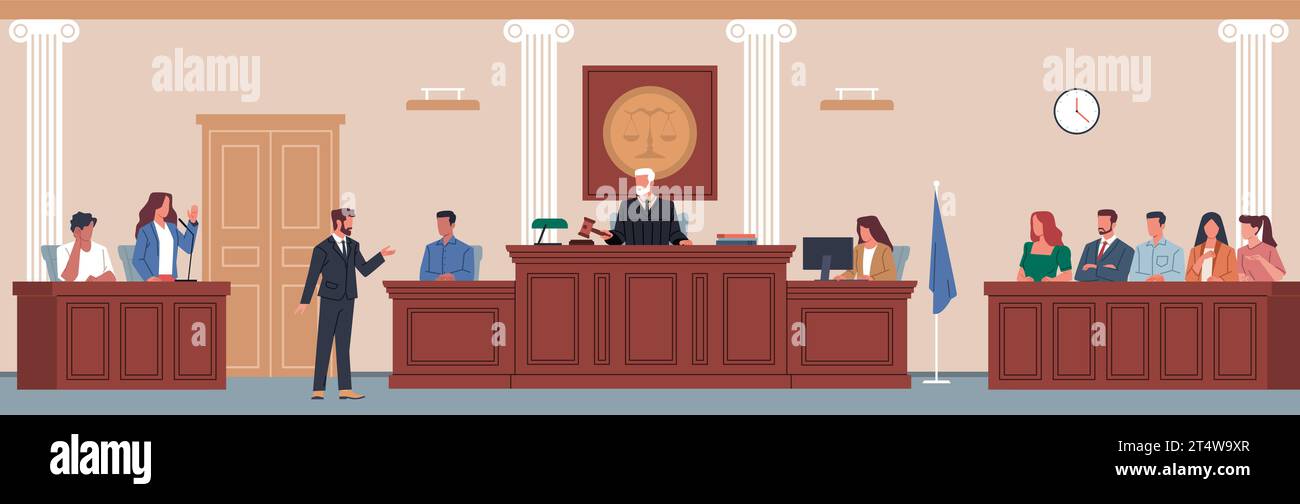Mesmerize the Jury: Crucial Components of a Powerful Trial Presentation
In the realm of legal advocacy, the capacity to captivate a court is paramount to the outcome of a trial (trial presentation). Important components such as comprehending the audience, crafting an engaging story, and grasping spoken and non-verbal interaction are crucial elements of an effective presentation. The tactical use of visual help can significantly enhance understanding and retention of vital disagreements. As these aspects link, they develop a natural strategy that not only educates however likewise engages jurors on several levels. What specific strategies can truly transform a basic presentation into an unforgettable experience for the court?

Comprehending Your Audience
Comprehending your target market is an essential aspect of efficient test presentation. An effective presentation pivots on the capacity to understand the demographics, values, and proneness of jurors. This comprehension notifies exactly how arguments are mounted, proof exists, and sob stories are crafted, ensuring that the message resonates with the jurors on a personal level.
Research study indicates that jurors come from diverse histories and might have varying degrees of comprehending pertaining to lawful procedures. In addition, recognizing the jurors' potential predispositions and life experiences allows the test presenter to anticipate objections and address problems proactively.
Effective trial presentation also involves observing jurors' reactions during the procedures. Being attuned to non-verbal signs can supply insight right into their interaction and receptiveness, enabling for real-time adjustments in approach. Ultimately, an extensive understanding of the target market not only enhances interaction however additionally builds connection, boosting the possibility of a desirable outcome. Involving with jurors as people instead of a collective device is important in cultivating a solid link in the courtroom.

Crafting an Engaging Story
Crafting a compelling narrative is important in directing jurors with the intricacies of an instance. A well-structured narrative not only streamlines complex lawful concepts but likewise engages jurors on a psychological level, making the info much more relatable and memorable.
This message ought to reverberate with the jurors' values and experiences, fostering a connection that transcends plain realities. This chronological technique can assist jurors adhere to the development of events, stressing reason and result.
Including human aspects-- such as individual tales or narratives-- can even more boost the narrative's influence. These elements evoke compassion, allowing jurors to envision the consequences of the situation on realities. In addition, using a regular style throughout the presentation strengthens the main disagreement, making it less complicated for jurors to keep crucial factors.
Eventually, a compelling story transforms a trial presentation from a simple address of truths into a convincing tale that captivates the jury, motivating them to deliberate with both reason and emotion.
Using Aesthetic Help
Incorporating visual aids into a test discussion can substantially improve jurors' comprehension and retention of details. Visual products such as charts, diagrams, photographs, and videos can transform intricate lawful concepts and evidence right into easily absorbable formats. By involving multiple senses, these help allow jurors to visualize the case's crucial elements, making it much easier for them to adhere to along and understand detailed information.
Furthermore, well-designed aesthetic help can stress great site crucial points and highlight connections between different pieces of evidence. For example, timelines can effectively highlight the series of occasions, while annotated pictures can make clear particular information appropriate to the case. This not just aids in understanding however additionally strengthens the story provided by the attorney.
Extremely complicated or chaotic visuals may overwhelm jurors and detract from the message. Eventually, reliable aesthetic interaction can be a powerful device in persuading jurors and helping them get to notified conclusions.
Grasping Verbal Interaction
Efficient great site verbal interaction is important in a test discussion, as it works as the primary means through which lawyers convey their disagreements and attach with jurors. Mastering this ability entails quality, persuasion, and engagement. Attorneys have to articulate their factors clearly and concisely, staying clear of lawful jargon that might perplex jurors. Simpleness in language promotes understanding and assists jurors understand intricate issues presented throughout the test.
Moreover, tone and pacing substantially impact just how messages are received. A confident tone communicates authority, while appropriate pacing allows jurors to take in details without feeling bewildered. Lawyers should additionally vary their singing inflections to highlight vital factors and maintain jurors' passion throughout the discussion.
Furthermore, the company of verbal arguments is vital. Structuring the narrative rationally and coherently helps jurors adhere to the lawyer's line of reasoning, making it easier for them to keep important details. Utilizing convincing strategies, such as storytelling, can also boost the emotional vibration of the debates presented, consequently creating a more profound connection with jurors.
Eventually, mastering spoken interaction not only reinforces an attorney's situation yet also promotes count on and relationship with the jury, substantially boosting the chances of a beneficial verdict.

Engaging With Body Movement
Nonverbal interaction plays an essential duty in test discussions, usually communicating messages that words alone can my site not express. Body movement, encompassing gestures, posture, face expressions, and eye call, significantly influences exactly how jurors perceive the credibility and genuineness of the presenter. A certain position, with shoulders back and an open stance, can impart depend on, while closed-off body language may recommend defensiveness or uncertainty.

Face expressions need to show the emotions related to the situation, enhancing the story being provided. A genuine expression during a poignant minute can generate empathy and enhance the psychological allure. Ultimately, understanding body movement is crucial for efficient test presentations, as it boosts spoken communication and establishes a compelling existence that reverberates with the jury.
Verdict
To conclude, captivating the court requires a tactical strategy that encompasses understanding the audience, crafting an engaging narrative, utilizing aesthetic aids, mastering spoken communication, and involving via body movement. Each aspect plays an important function in developing a powerful test presentation that reverberates with jurors on both emotional and intellectual degrees (trial presentation). By incorporating these parts successfully, legal specialists can significantly improve their capacity to persuade and affect jury decision-making